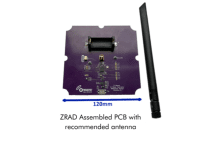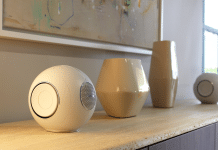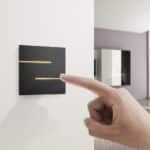
The upcoming Crestron Home® OS version 3.13, which will be available in May, has a number of new features, but one of the most intriguing is the addition of Circadian Rhythm settings, which allow you to “auto-tune” lighting to mimic natural light patterns throughout the day.
Everyone who uses Crestron dimmers will now have the ability to modify the light intensity in this “bio-centric” manner. This upgrade will make every feature of Crestron’s tunable LED light fixtures, as well as those provided by its partners, available in the new fixtures, including the Circadian Rhythm function’s color.
Setup is remarkably easy: “There are really just five steps to it, and any Crestron dealer will find the process familiar,” says Jason Oster, director of product management (residential solutions) for Crestron.
Those steps are:
- In the advanced Crestron Home menu, press “Circadian.”
- In the Circadian menu, set desired color temperature levels for morning, day, evening, and night. “Throughout the day we take those points at various times of day and create a nice smooth curve to adjust the color temperature,” explains Oster. “The homeowner doesn’t concisely see color temperature levels since the color temperature shifts are being slowly executed behind the scenes by Crestron Home.”
For systems that only have traditional dimmers, instead of color temperature, the Circadian feature can adjust the lighting intensity. Oster explains, “Even before the Crestron fixtures are released, with traditional Crestron lighting systems, people can now take advantage of this Circadian feature.”
- Run the preview. “This allows the integrator to play back a whole day in one minute,” says Oster. That’s when all the adjustments to a day-long program are made. “They can do this either by themselves or with a lighting expert. Or, if they want to, and the homeowner’s interested, they can walk around with the client and adjust via a tablet or use the touch panel on the wall, tweaking all these settings, pressing the preview button, and asking the homeowner. ‘Hey, what do you think of that? Do you want it lighter, darker, different color temperature?’”
- Repeat step three for each room featuring Circadian lighting.
- Choose the trigger. “There are different ways of automating this,” Oster notes. “You can trigger Circadian mode from a Horizon keypad, a schedule, a touch panel, or, of course, from your Crestron Home app.” One can also set certain override scenes. “Suppose I want to clean the kitchen, but it’s midday on a sunny day,” says Oster. “I’d want all the light at one hundred percent, even though normally I wouldn’t want that with noontime sun pouring into the windows. I’ll add, say, a ‘Clean’ scene button, and that’ll give me maximum light in that room to temporarily override the automatic Circadian scene recall.”
SolarSync, which uses an exterior Crestron SolarSync sensor to pick up the actual outside color temperature of the sun in real-time and adapts your inside lighting to match that light, is also included in this version.
Warm Dim is another feature of the update: “You can think of it like the old-school incandescent bulbs as one dims the light, it starts to go towards more of a yellow or an orange hue,” says Oster. “It feels more natural to most people because many of us grew up with incandescent bulbs.”
Dashboards and DM NAX Updates
Beyond lighting, the device health dashboard is seeing more features added with every update, too. “It’s now capable of much more than just power cycling a device. For example, with this release, we support tracking and monitoring the battery life of TSR-310 remotes and even see the last time the remote checked in with the control processor to glean if someone has left a remote off the dock for a few days,” says Oster.
This update also includes battery life information from the door and occupancy sensors. Additionally, as Crestron publishes new upgrades to the device health dashboard, additional devices and features are immediately added to the dashboard.
There’s news on the Crestron DM NAX front as well. “Previously we added support for Amazon connected speakers,” Oster explains. “With this release, we’re now supporting the Spotify Connect app, which allows each user to save favorites — you like classical music in the morning? Call it up with a single press with any Crestron Home device, including presets from keypads.”
New drivers and Crestron Home Extensions are constantly being released to the driver portal. Among the most recent third-party driver releases are two from the UK-based Lighting Control:
- An “Intercom” feature that allows door station to touch panel or touch panel to touch panel communication.
- “Vacation Recording” feature that learns the homeowner’s lighting patterns, and gives the illusion of occupancy when the client’s away.
Like so many other features, this update comes from the feedback loop that Crestron nurtures: “The CSP/Dealer community that are making these drivers are getting very creative and create a very useful list of drivers for the Crestron Home community,” says Oster. “They’re using both our SDK driver as well as the Crestron Home REST API for controlling Crestron Home.”
“Almost every single week, we have multiple extensions being submitted to Crestron so we can post them up on our cloud,” says Oster. “It’s always incredible to see what our dealers and CSPs are coming up with.”















